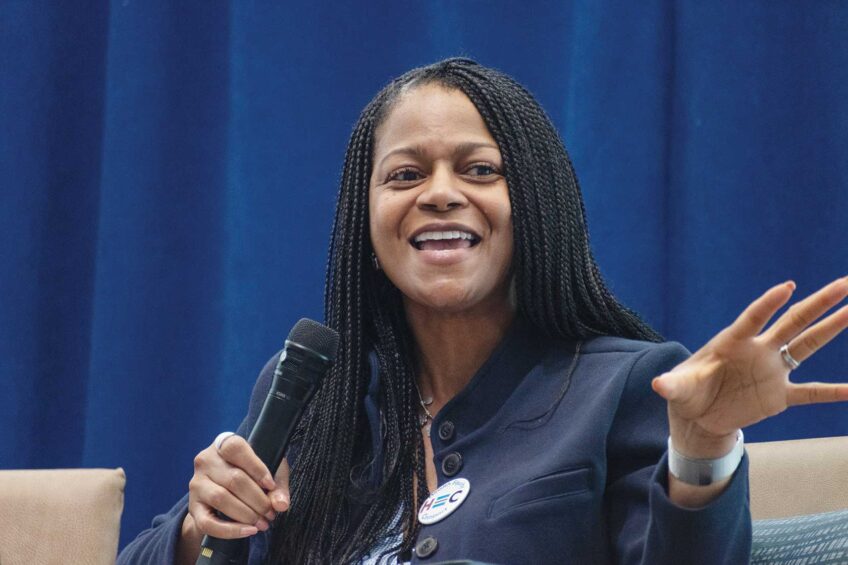For African Americans, melanoma is more likely to be diagnosed in the advanced stages of the skin cancer. While many are able to fight the cancer, a disturbingly high number cannot.
“Overall, melanoma survival is much lower [in blacks],” said Dr. Caroline C. Kim, Director of Pigmented Lesion Clinic at Beth Israel Deaconess Medical Center.
As it is now, one in four African Americans is diagnosed too late to save their lives, a statistic Dr. Kim is hoping will change with increased awareness in the community.
Last month, she paired up with The Skin Cancer Foundation’s Road to Healthy Skin Tour. For the third year in a row, the Tour parked its 38-foot RV outside of Cambridge and Braintree Rite Aids, to perform skin cancer screenings and educate participants on the benefits of early detection.
“It was a great event,” said Dr. Kim, who performed testing in Cambridge, “everyone who came out had different skin and we had a wide-range of people.”
In five hours, the doctors performed 30 free full-body skin exams. The team identified nine cases of skin growths, two cases of basal cell carcinoma and one case of melanoma.
Melanoma is a growing cause of skin cancer in the black community, but other forms include basal and squamous cell carcinoma, which are primarily caused by UV exposure.
According to the Skin Cancer Foundation, squamous cell carcinoma is the most common form of skin cancer among African Americans, which usually arises on the sites of burn injuries or areas where inflammatory skin conditions may already exist.
“There is a connection between the ability to burn and skin cancer,” Dr. Kim said, which may explain why only 1 in 100,000 African Americans are diagnosed, a relatively low number compared to whites.
Because African Americans have increased amounts of melanin, the protective brown pigment that gives skin its color, they are less likely to get cancer on sun exposed areas. Rather, the key places to look for cancerous moles are where the pigmentation is naturally lighter.
“African Americans should look for moles on the palms of hands, bottom of feet and underneath the nails,” Dr. Kim said.
She follows the irregular rule, or as she likes to call it — the “ugly duckling rule,” which she says is quite accurate. “If any spot seems out of the ordinary — or an odd- ball, it would be worth bringing in to your doctor.”
Another way to identify potential cancerous moles is to consider the rule of “A.B.C.D.” The acronym stands for crucial identifiers of melanoma: Asymmetry, one half of the spot does not look like the other half; Border irregularity, instead of being rounded, the edges look more like a jigsaw puzzle; Colors, there are a lot of colors in the mole; and Diameter, a mole is larger than the size of a pencil eraser in diameter.
If any of these irregularities appear, a cancer screening is recommended.
Not every irregular mole is cancerous, but being screened regularly may lead to an early diagnosis and successful treatment.
Dr. Kim emphasized that everybody should be aware of the risks for skin cancer — and the best preventative method is to wear a minimum of SPF 30 when spending time in the sun, no matter the color of your skin.






